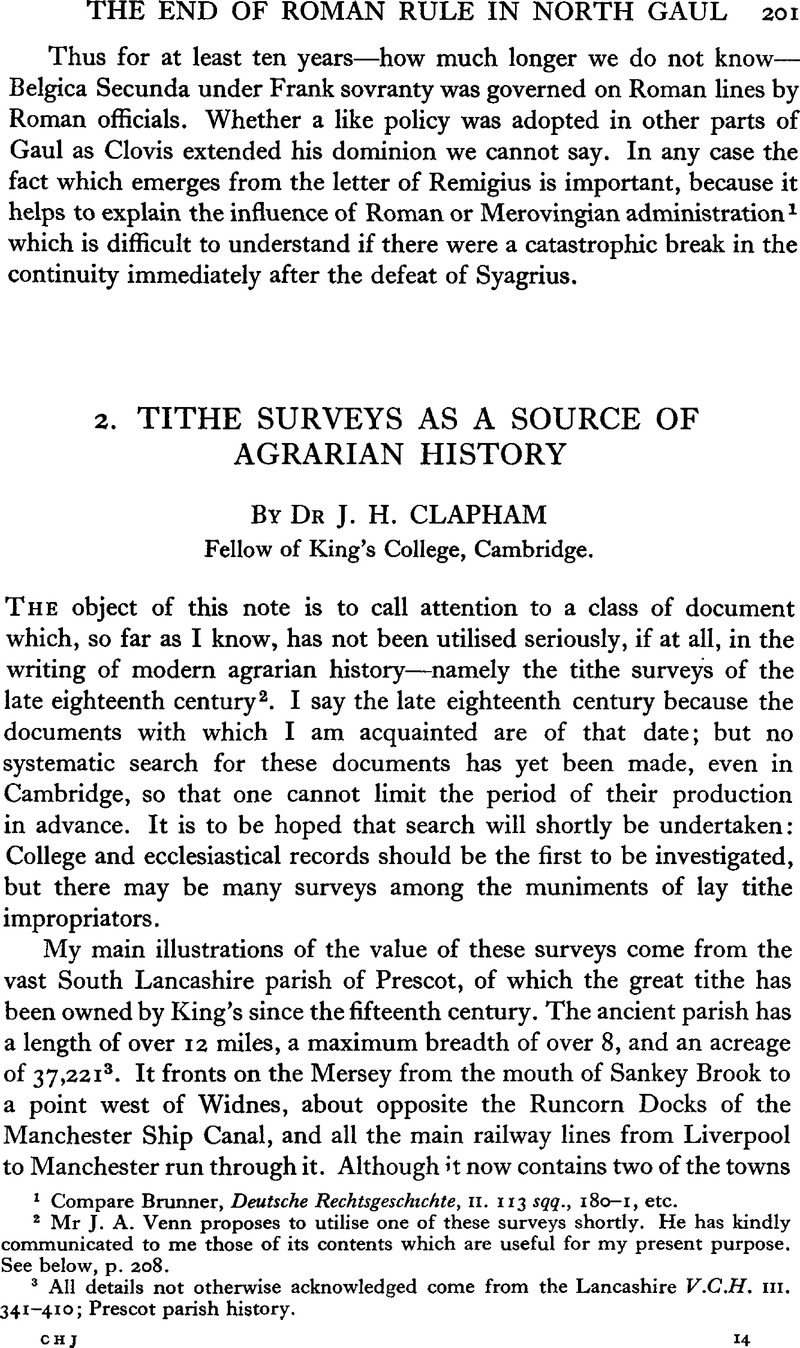No CrossRef data available.
Published online by Cambridge University Press: 20 December 2011

page 201 note 1 Compare Brunner, Deutsche Rechtsgeschichte, ii. 113 sqq., 180–1, etc.
page 201 note 2 Mr J. A. Venn proposes to utilise one of these surveys shortly. He has kindly communicated to me those of its contents which are useful for my present purpose. See below, p. 208.
page 201 note 3 All details not otherwise acknowledged come from the Lancashire V.C.H. iii. 341–410; Prescot parish history.
page 202 note 1 In 1801, 3465.
page 202 note 2 So Lady Kenyon, in 1797, V.C.H. III. 374.
page 202 note 3 In 1801, 1063.
page 202 note 4 Pennant, quoted in V.C.H., describing a journey across the parish from Warrington to Knowsley.
page 202 note 5 See Johnson, Farmer's Encyclopaedia, 1842, s.v. acre.
page 203 note 1 P. 88.
page 206 note 1 Cd. 5585, 1911, p. 72.
page 206 note 2 Agriculture…of Lancaster, 1794, p. 14 n.
page 207 note 1 P. 28.
page 207 note 2 There is an interesting letter to the College from one Hy. Ogle of Oct. 27, 1636, which discusses tenures and abuses in the manor of Prescot—” houses on the waste which they pass by copy (not by lease as I conceive they should)”:. destruction of woods: digging of coals without leave and selling them “to Ireland and Chester and other remote places.” Eventually Prescot copyholders secured the mineral rights at the expense of the absentee corporation—which is probably unique.
page 208 note 1 The 1785–6 figures add up to 1619 ac. 3 r. 18 p., those of 1789–90, 1619 ac. 3 r. 23 p. The actual area is 2316; but the parish contains, and contained in the eighteenth century, a Hall, a vicarage and several private houses with their grounds. It also contains to-day 60 acres of “fuel allotment”—the compensation for an enclosed common.
page 208 note 2 There were, in 1923, 21 farmers and two market gardeners in Mattishall. See Kelly, Norfolk Directory.